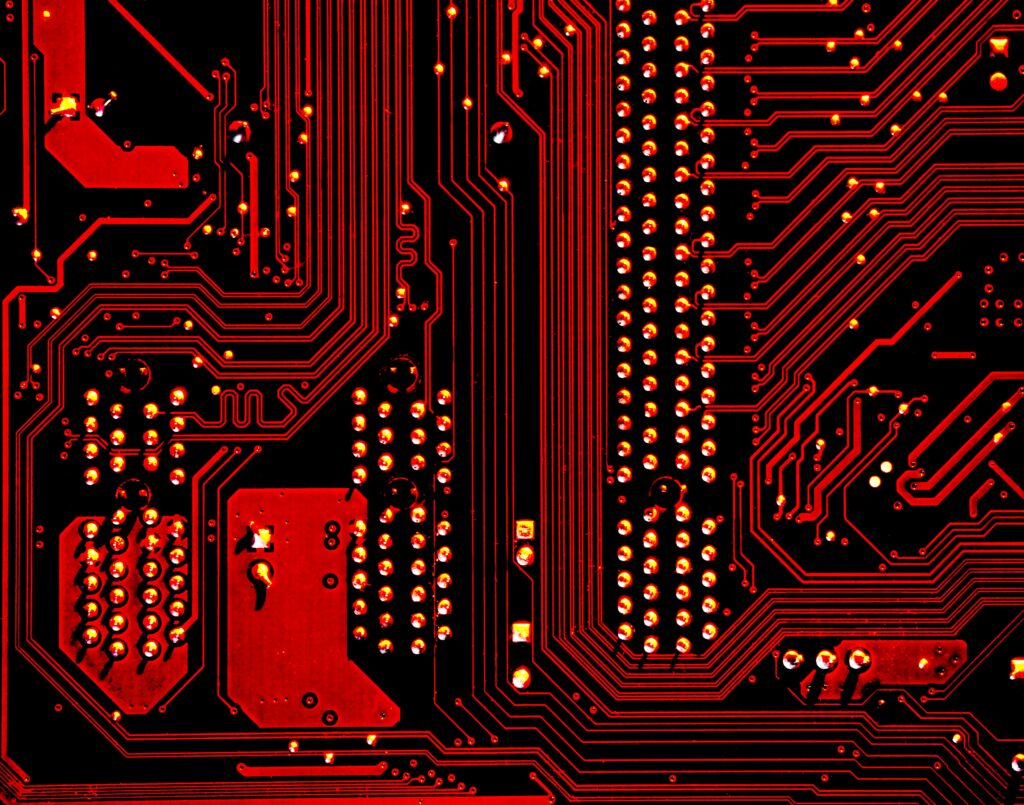Artificial Intelligence (AI) has revolutionized countless industries, from healthcare to finance, but its impact on the world of intellectual property is particularly fascinating. In this article, we will delve into the intriguing realm of AI in drafting mechanical engineering patents. Patents play a pivotal role in safeguarding innovations, and the adoption of AI in this domain promises to streamline the patent drafting process, increase efficiency, and ultimately lead to more robust patents. This comprehensive guide will explore the intricacies of AI-driven patent drafting, its applications in the field of mechanical engineering, and the legal implications surrounding AI-generated patents.
Understanding Mechanical Engineering Patents
What Are Mechanical Engineering Patents?
Mechanical engineering patents protect innovations related to mechanical devices, systems, and processes. These patents cover a wide array of inventions, from cutting-edge manufacturing techniques to innovative machinery designs. A mechanical engineering patent serves as a legal document that grants its owner exclusive rights to their invention for a specified period, typically 20 years from the filing date. During this time, the patent holder can prevent others from making, using, selling, or importing the patented invention.
Importance of Patents in Protecting Innovations
The importance of patents in the realm of mechanical engineering cannot be overstated. They provide inventors and innovators with a legal framework to protect their intellectual property. Without patents, there would be little incentive for individuals and companies to invest time and resources into developing new mechanical technologies. Patents not only protect the inventor’s rights but also encourage innovation by ensuring that inventors can profit from their creations.
Challenges in Drafting Mechanical Engineering Patents
Drafting a mechanical engineering patent is a complex process that requires meticulous attention to detail. Engineers and patent attorneys face several challenges when creating these documents:
The Role of AI in Patent Drafting
Now that we’ve established the importance of mechanical engineering patents, let’s explore the role of AI in patent drafting and its potential to address the challenges outlined above.
Definition and Types of AI in Patent Drafting
AI encompasses a wide range of technologies that simulate human intelligence to perform tasks such as problem-solving, learning, and decision-making. In the context of patent drafting, AI can assist at various stages of the process:
Advantages of Using AI in Patent Drafting for Mechanical Engineering
The integration of AI into patent drafting offers several compelling advantages. AI-powered tools can process and analyze vast amounts of data much faster than humans, reducing the time and effort required for prior art searches and drafting. AI can minimize errors in patent applications by ensuring that technical descriptions are consistent and comprehensive. AI-driven patent drafting can lead to cost savings for inventors and organizations, as it reduces the need for extensive manual labor. By expediting the patent drafting process, AI encourages inventors to disclose their inventions promptly, fostering innovation.
AI Tools and Technologies for Patent Drafting
Now that we understand the advantages and applications of AI in patent drafting, let’s delve into the AI tools and technologies that have transformed the field.

AI technologies play a crucial role in patent drafting by enhancing efficiency, accuracy, and speed in the creation of patent applications. In this section, we’ll discuss in detail the AI technologies commonly used in patent drafting:
Natural Language Processing (NLP)
Text Analysis: NLP is used to analyze and understand the text of existing patents, technical documents, and scientific literature. It can extract key concepts, keywords, and relationships from these documents, making it easier for patent drafters to identify relevant prior art and frame their patent claims effectively.
Language Generation: NLP models like GPT-3 can generate patent descriptions and claims in a coherent and structured manner. They can be used to automatically draft patent applications by interpreting the invention disclosure from inventors and transforming it into a patent document.
Machine Learning (ML) Algorithms
Predictive Analytics
ML models can predict patent classifications and categories based on the content of a patent disclosure. This aids in selecting the most appropriate categories for patent applications and ensuring they align with existing patents.
Classification and Categorization
ML algorithms can classify and categorize patents, which helps patent drafters find relevant prior art and understand where their invention fits within the existing body of knowledge.
Computer Vision
Image Analysis: In mechanical engineering, patents often involve diagrams, schematics, and other visual representations. Computer vision can interpret these visuals and generate descriptions, making it easier to include visual elements in patent applications. For example, it can identify the components of a machine from an image and describe their functions.
3D Modeling: In cases involving complex 3D designs or inventions, computer vision can assist in creating 3D models and diagrams for patent applications, which can be challenging for humans to draft accurately.
Expert Systems
Knowledge-Based Systems: Expert systems use knowledge bases and rule-based reasoning to assist patent drafters in making decisions related to patent claims and descriptions. These systems can ensure that patent applications are compliant with legal and technical requirements, reducing the likelihood of rejection or costly amendments.
Automated Validation: Expert systems can validate patent drafts for compliance with specific patent office rules and regulations, ensuring that the application meets the necessary standards before submission.
Semantic Analysis
Semantics and Ontologies: AI-driven semantic analysis can capture the deeper meaning of technical terms and concepts. This is particularly important in mechanical engineering, where precise terminology is critical. By understanding the semantics, AI systems can help patent drafters use consistent and accurate language throughout the application.
Eliminating Ambiguity: AI can identify and suggest alternatives for ambiguous or vague terms within patent applications. This ensures clarity and reduces the risk of misinterpretation by patent examiners.
These AI technologies are continually advancing, and their integration into patent drafting processes is becoming increasingly seamless. By automating many aspects of the patent drafting workflow, AI not only saves time and effort but also contributes to the overall quality and accuracy of patent applications. Patent professionals and inventors are increasingly relying on these technologies to stay competitive in the ever-evolving field of intellectual property. However, it’s important to recognize that while AI offers significant advantages, human expertise and legal understanding are still essential in crafting strong and defensible patent applications.
The Process of Drafting Mechanical Engineering Patents with AI
Step-by-step process of using AI for patent drafting in the field of mechanical engineering.
Step 1: Preparing Patent Specifications
The journey begins with preparing detailed patent specifications. In this phase, AI can be used to analyze existing patents and technical literature to identify relevant prior art. Generate initial patent claims based on the invention’s technical details. Provide inventors and patent attorneys with an overview of the patent landscape in the specific domain.
Step 2: Identifying Prior Art
AI tools excel in conducting thorough prior art searches. They can quickly scan vast patent databases, scientific journals, and technical documents. Identify patents and publications that relate to the invention in question. Highlight potentially relevant prior art, making it easier for patent professionals to assess novelty and non-obviousness.
Step 3: Generating Patent Claims
One of the most time-consuming aspects of patent drafting is creating patent claims. AI can significantly expedite this process by analyzing the invention’s technical specifications and details, suggesting potential patent claims based on existing patents and legal guidelines, and allowing patent attorneys to refine and customize claims as needed.
Step 4: Drafting Detailed Descriptions
Detailed descriptions in patent applications are crucial. AI can assist by:
Tips and Best Practices for Effective AI-Assisted Patent Drafting
While AI can enhance the patent drafting process, it’s essential to follow best practices to maximize its benefits. Foster collaboration between engineers, inventors, and patent attorneys to ensure that AI-generated drafts accurately represent the invention. AI-generated drafts should undergo thorough human review to ensure accuracy, clarity, and alignment with legal requirements. Stay updated on AI advancements in patent drafting to leverage the latest tools and technologies effectively. Protect sensitive intellectual property data when using AI tools by employing robust cybersecurity measures. Ensure that AI-generated patent drafts comply with legal requirements and patent office guidelines.
Legal Implications of AI-Generated Patents
As AI plays a more significant role in patent drafting, several legal implications arise. Let’s explore some of the key legal aspects surrounding AI-generated patents.
Patent Eligibility and AI-Generated Inventions
The question of whether AI-generated inventions are eligible for patents is a complex legal issue. In many jurisdictions, patents are granted to human inventors. Therefore, AI-generated inventions may face challenges in terms of inventorship.
Patent Ownership and Inventorship
Determining ownership and inventorship of AI-generated patents poses legal challenges. In some cases, the inventor may be the individual or organization that developed or deployed the AI system, while in others, it may be the individual who provided the initial creative input.
Legal Frameworks and Regulations
The legal landscape surrounding AI-generated patents is evolving. Governments and patent offices are actively considering how to address the unique challenges posed by AI. It’s crucial for patent professionals and inventors to stay informed about changing regulations and guidelines.
Future Trends and Developments
As we look to the future of AI in patent drafting for mechanical engineering, several trends and developments are worth noting. AI may soon assist in the prosecution phase of patent applications, helping patent attorneys navigate complex legal processes. The advent of quantum computing could revolutionize patent searches by exponentially increasing processing speed and capacity. Blockchain technology may be used to establish secure, transparent records of intellectual property ownership and transactions.
The role of patent attorneys may evolve with the increasing integration of AI. While AI can automate many aspects of patent drafting and analysis, patent attorneys will continue to provide essential expertise in legal strategy, negotiation, and dispute resolution.
The legal and patent industry has historically been conservative and slow to embrace technological change. Resistance to adopting AI tools may persist, especially among traditional patent professionals. To fully harness the capabilities of AI, patent professionals must undergo training and education to understand AI technologies and their applications in patent drafting.
While AI can reduce costs in the long run, there may be initial investments required for software, training, and integration. Patent professionals and organizations must carefully assess the return on investment (ROI) of AI adoption.
The integration of AI into the world of mechanical engineering patents represents a transformative shift in the field. AI-powered tools offer unparalleled efficiency, accuracy, and speed in patent drafting and analysis. As the legal landscape adapts to accommodate AI-generated inventions, patent professionals and inventors must embrace this technology to remain competitive and protect their innovations effectively.
AI is not here to replace human expertise but to augment it, enabling patent professionals to focus on strategic decision-making and legal aspects while leaving repetitive tasks to AI systems. As the future unfolds, we can anticipate greater collaboration between humans and AI in the quest to safeguard mechanical engineering innovations and drive technological progress.
In this dynamic landscape, staying informed about the latest AI advancements and legal developments is crucial. The world of mechanical engineering patents is poised for a remarkable transformation, and those who harness the power of AI will undoubtedly lead the way into this exciting future. Intellectual property continues to evolve, and embracing AI is not just a choice but a strategic imperative for those seeking to protect and leverage their innovations effectively. Whether you are an inventor, a patent attorney, or a technology enthusiast, the journey into the world of AI in patent drafting promises exciting possibilities and a brighter future for innovation in mechanical engineering.
